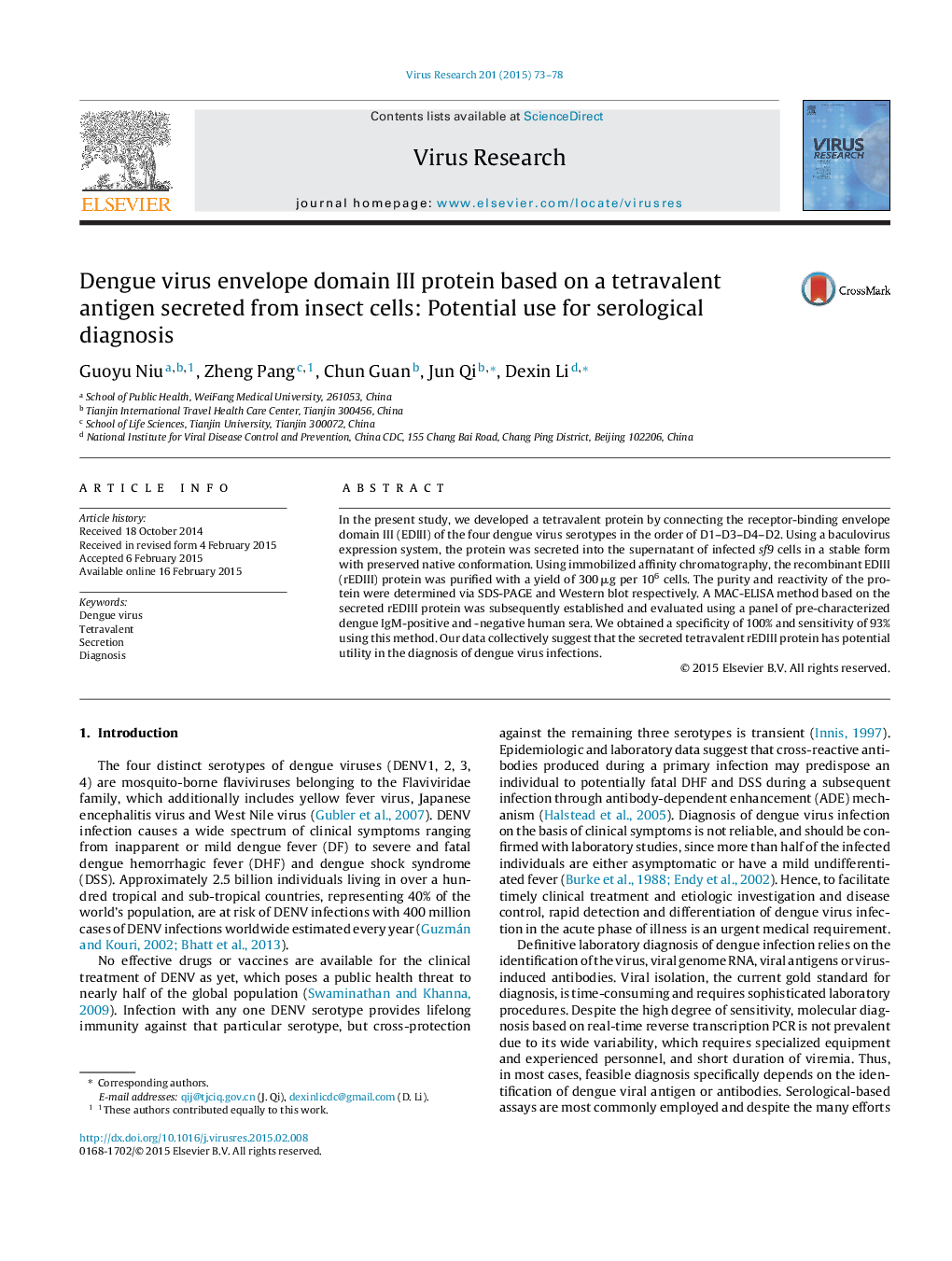| Article ID | Journal | Published Year | Pages | File Type |
|---|---|---|---|---|
| 3428163 | Virus Research | 2015 | 6 Pages |
•We constructed a tandem domain III of dengue virus1–4 E protein gene by linker.•The tetravalent protein was secreted into the supernatant of baculovirus-infected sf9 cells culture.•A MAC-ELISA method based on the secreted tetravalent protein was established.•The method was evaluated by a panel of pre-characterized dengue IgM positive and dengue IgM negative human sera (n = 249).
In the present study, we developed a tetravalent protein by connecting the receptor-binding envelope domain III (EDIII) of the four dengue virus serotypes in the order of D1–D3–D4–D2. Using a baculovirus expression system, the protein was secreted into the supernatant of infected sf9 cells in a stable form with preserved native conformation. Using immobilized affinity chromatography, the recombinant EDIII (rEDIII) protein was purified with a yield of 300 μg per 106 cells. The purity and reactivity of the protein were determined via SDS-PAGE and Western blot respectively. A MAC-ELISA method based on the secreted rEDIII protein was subsequently established and evaluated using a panel of pre-characterized dengue IgM-positive and -negative human sera. We obtained a specificity of 100% and sensitivity of 93% using this method. Our data collectively suggest that the secreted tetravalent rEDIII protein has potential utility in the diagnosis of dengue virus infections.
